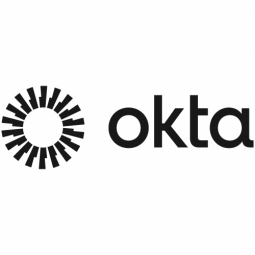Customer Company Size
Large Corporate
Region
- Asia
Country
- Japan
Product
- Okta Workflows
- Okta API Access Management
- Okta Adaptive Multi-Factor Authentication (AMFA)
- Okta Verify
Tech Stack
- OAuth
- Python
- C#
Implementation Scale
- Enterprise-wide Deployment
Impact Metrics
- Productivity Improvements
- Customer Satisfaction
- Digital Expertise
Technology Category
- Cybersecurity & Privacy - Identity & Authentication Management
- Application Infrastructure & Middleware - API Integration & Management
- Functional Applications - Enterprise Resource Planning Systems (ERP)
Applicable Industries
- Pharmaceuticals
- Healthcare & Hospitals
Applicable Functions
- Business Operation
- Quality Assurance
Services
- System Integration
- Cloud Planning, Design & Implementation Services
- Software Design & Engineering Services
About The Customer
Takeda is a global, values-based, R&D-driven biopharmaceutical leader headquartered in Japan, with offices in 80 countries and regions. The company is committed to discovering and delivering life-transforming treatments, guided by a commitment to patients, employees, and the planet. Takeda focuses its R&D efforts on four therapeutic areas: Oncology, rare genetics and hematology, neuroscience, and gastroenterology. It also makes targeted R&D investments in plasma-derived therapies and vaccines. With a large global workforce and a complex operational structure, Takeda requires robust digital solutions to manage its identity and access management needs effectively.
The Challenge
Information security in the modern age presents a significant challenge for companies like Takeda, which must balance the need for fast, easy access to data with the growing threats to data confidentiality, integrity, and availability. As the Chief Digital Trust Officer, Mike Towers is tasked with building trust by tightening controls over sensitive company data while streamlining digital experiences for patients, caregivers, and partners globally. The acquisition of Shire Pharmaceuticals added complexity to Takeda's operations, necessitating a centralized identity platform to support a modern, Zero Trust security strategy. The existing identity and access management (IAM) system was cumbersome, requiring significant administrative effort, prompting the need for a more efficient solution.
The Solution
To address the challenges of identity and access management, Takeda partnered with Okta to build a centralized identity platform. This platform forms the foundation of a modern, Zero Trust security strategy while simplifying access for the Takeda community. The transition to Okta involved setting a single authentication source for the combined organization's 71,000 global workforce to securely access over 1,300 work applications. The team focused on centralizing identity, implementing Single Sign-On, and utilizing Okta Adaptive Multi-Factor Authentication (AMFA) to enhance security. Okta's additional products, such as Workflows and API Access Management, provided unexpected capabilities, allowing the team to automate processes and improve efficiency significantly. The use of Inline Hooks and API-driven solutions enabled the integration of custom logic and data from non-Okta sources, further enhancing the platform's functionality.
Operational Impact
Quantitative Benefit

Case Study missing?
Start adding your own!
Register with your work email and create a new case study profile for your business.
Related Case Studies.

Case Study
Case Study: Pfizer
Pfizer’s high-performance computing software and systems for worldwide research and development support large-scale data analysis, research projects, clinical analytics, and modeling. Pfizer’s computing services are used across the spectrum of research and development efforts, from the deep biological understanding of disease to the design of safe, efficacious therapeutic agents.

Case Study
Hospital Inventory Management
The hospital supply chain team is responsible for ensuring that the right medical supplies are readily available to clinicians when and where needed, and to do so in the most efficient manner possible. However, many of the systems and processes in use at the cancer center for supply chain management were not best suited to support these goals. Barcoding technology, a commonly used method for inventory management of medical supplies, is labor intensive, time consuming, does not provide real-time visibility into inventory levels and can be prone to error. Consequently, the lack of accurate and real-time visibility into inventory levels across multiple supply rooms in multiple hospital facilities creates additional inefficiency in the system causing over-ordering, hoarding, and wasted supplies. Other sources of waste and cost were also identified as candidates for improvement. Existing systems and processes did not provide adequate security for high-cost inventory within the hospital, which was another driver of cost. A lack of visibility into expiration dates for supplies resulted in supplies being wasted due to past expiry dates. Storage of supplies was also a key consideration given the location of the cancer center’s facilities in a dense urban setting, where space is always at a premium. In order to address the challenges outlined above, the hospital sought a solution that would provide real-time inventory information with high levels of accuracy, reduce the level of manual effort required and enable data driven decision making to ensure that the right supplies were readily available to clinicians in the right location at the right time.

Case Study
Gas Pipeline Monitoring System for Hospitals
This system integrator focuses on providing centralized gas pipeline monitoring systems for hospitals. The service they provide makes it possible for hospitals to reduce both maintenance and labor costs. Since hospitals may not have an existing network suitable for this type of system, GPRS communication provides an easy and ready-to-use solution for remote, distributed monitoring systems System Requirements - GPRS communication - Seamless connection with SCADA software - Simple, front-end control capability - Expandable I/O channels - Combine AI, DI, and DO channels

Case Study
Driving Digital Transformations for Vitro Diagnostic Medical Devices
Diagnostic devices play a vital role in helping to improve healthcare delivery. In fact, an estimated 60 percent of the world’s medical decisions are made with support from in vitrodiagnostics (IVD) solutions, such as those provided by Roche Diagnostics, an industry leader. As the demand for medical diagnostic services grows rapidly in hospitals and clinics across China, so does the market for IVD solutions. In addition, the typically high cost of these diagnostic devices means that comprehensive post-sales services are needed. Wanteed to improve three portions of thr IVD:1. Remotely monitor and manage IVD devices as fixed assets.2. Optimizing device availability with predictive maintenance.3. Recommending the best IVD solution for a customer’s needs.

Case Study
Fusion Middleware Integration on Cloud for Pharma Major
Customer wanted a real-time, seamless, cloud based integration between the existing on premise and cloud based application using SOA technology on Oracle Fusion Middleware Platform, a Contingent Worker Solution to collect, track, manage and report information for on-boarding, maintenance and off-boarding of contingent workers using a streamlined and Integrated business process, and streamlining of integration to the back-end systems and multiple SaaS applications.








